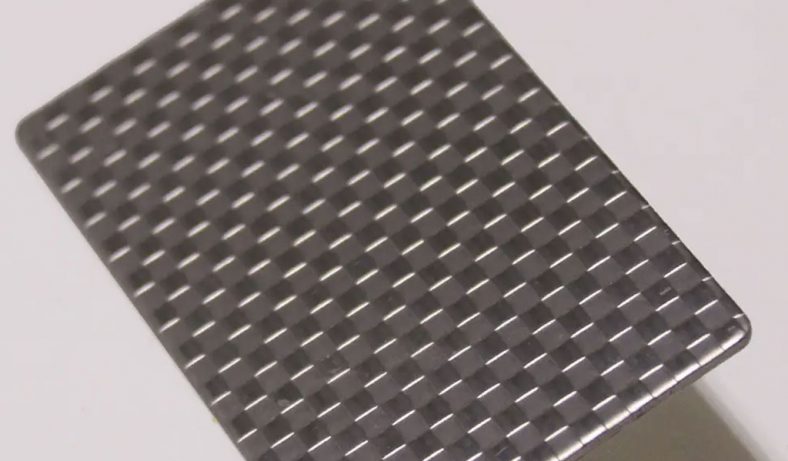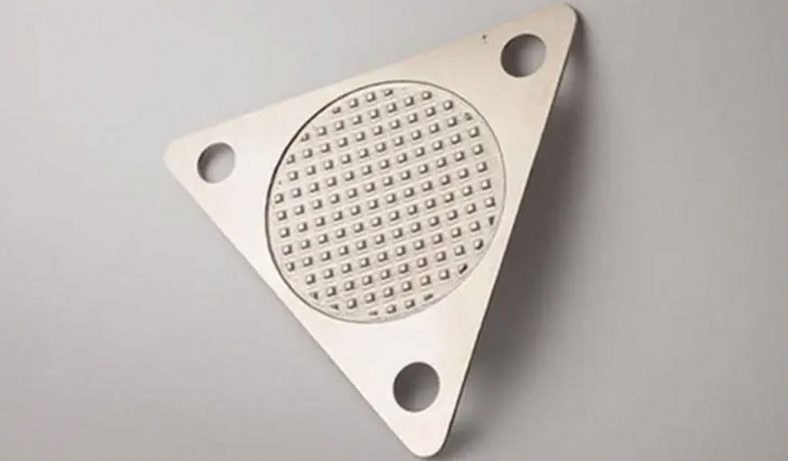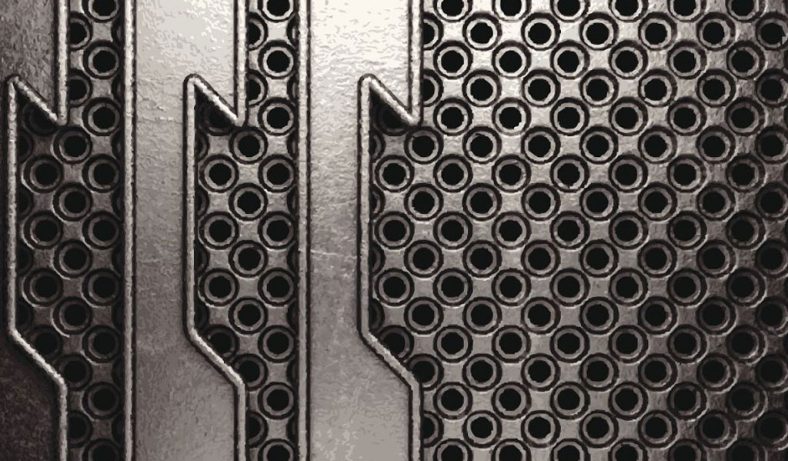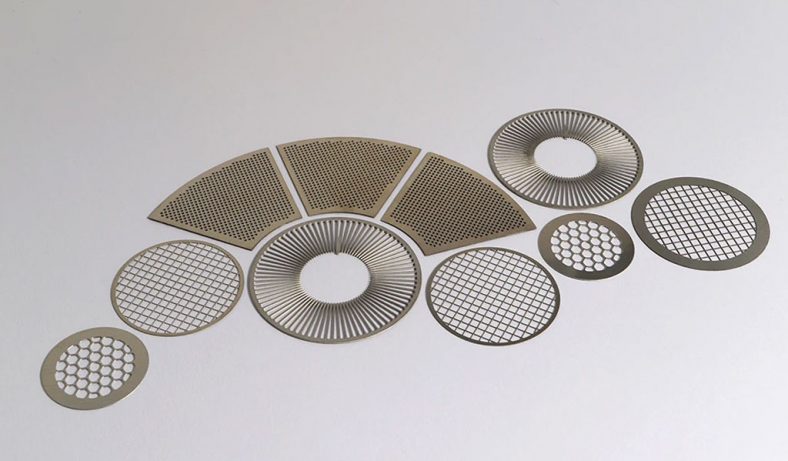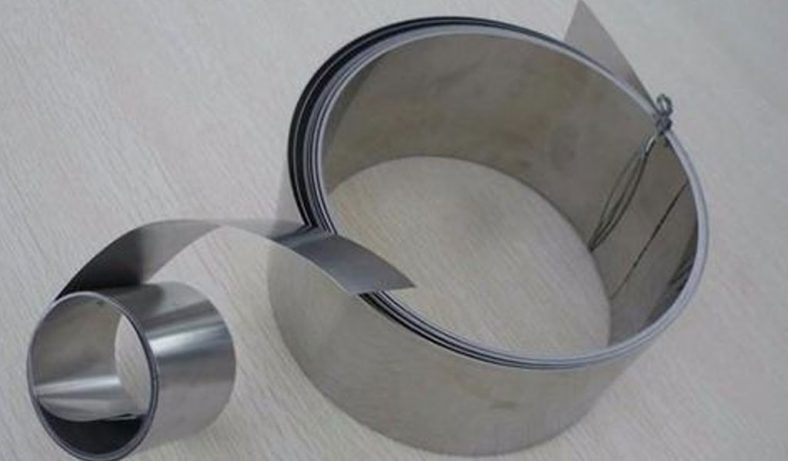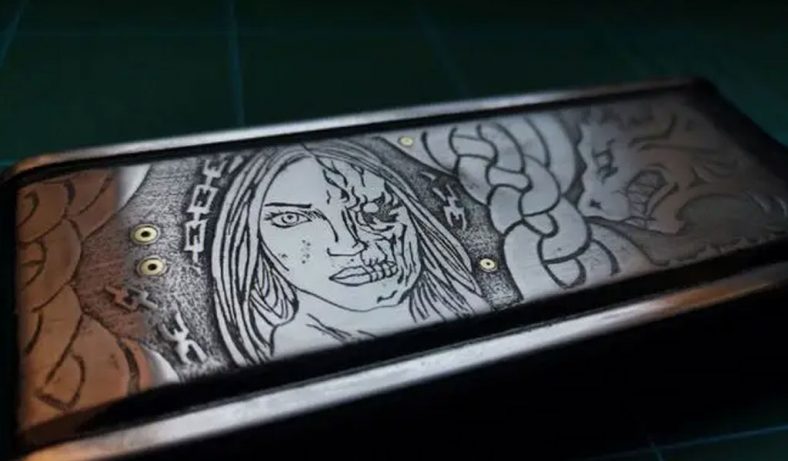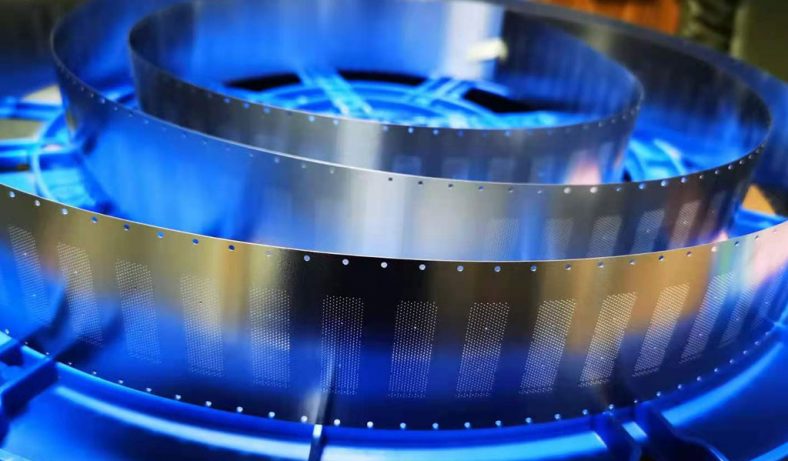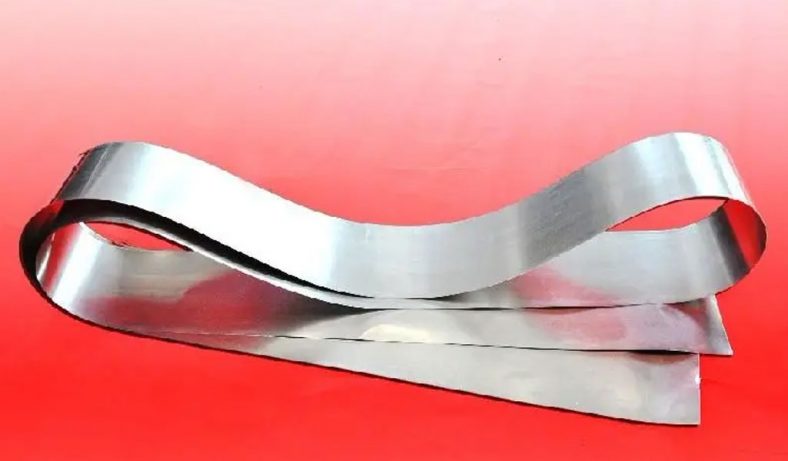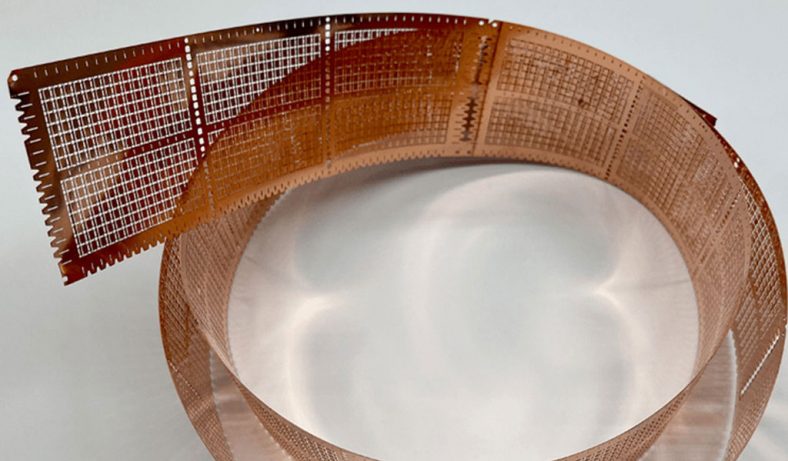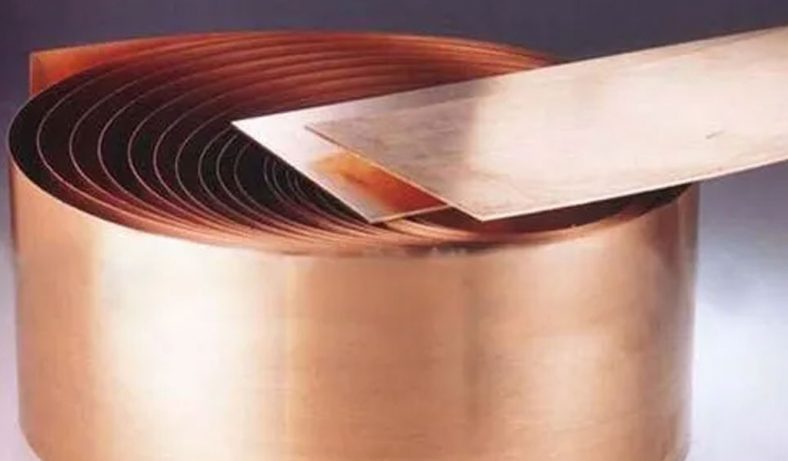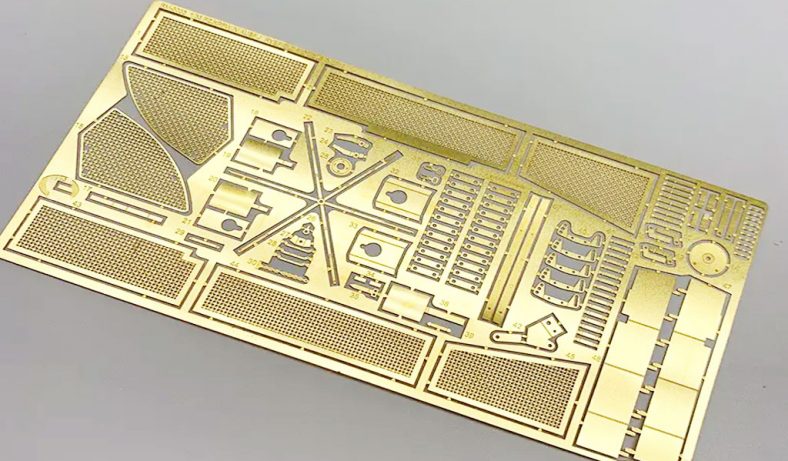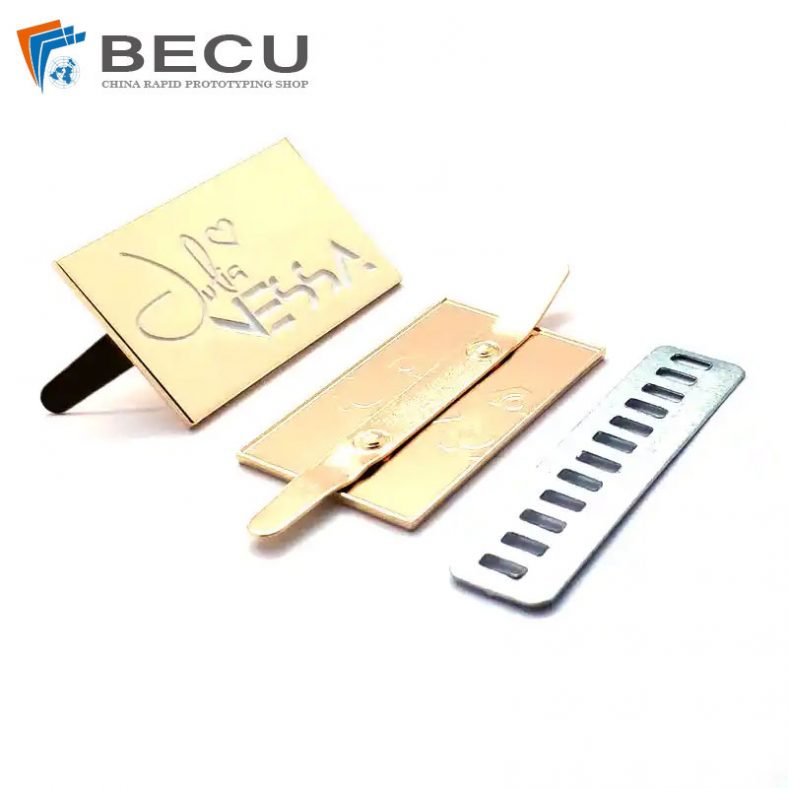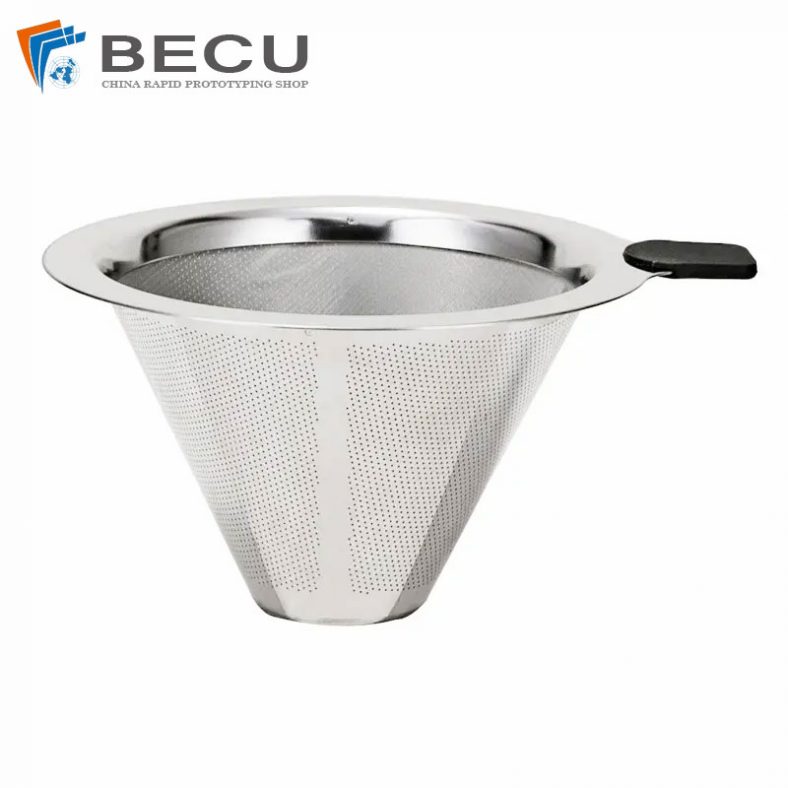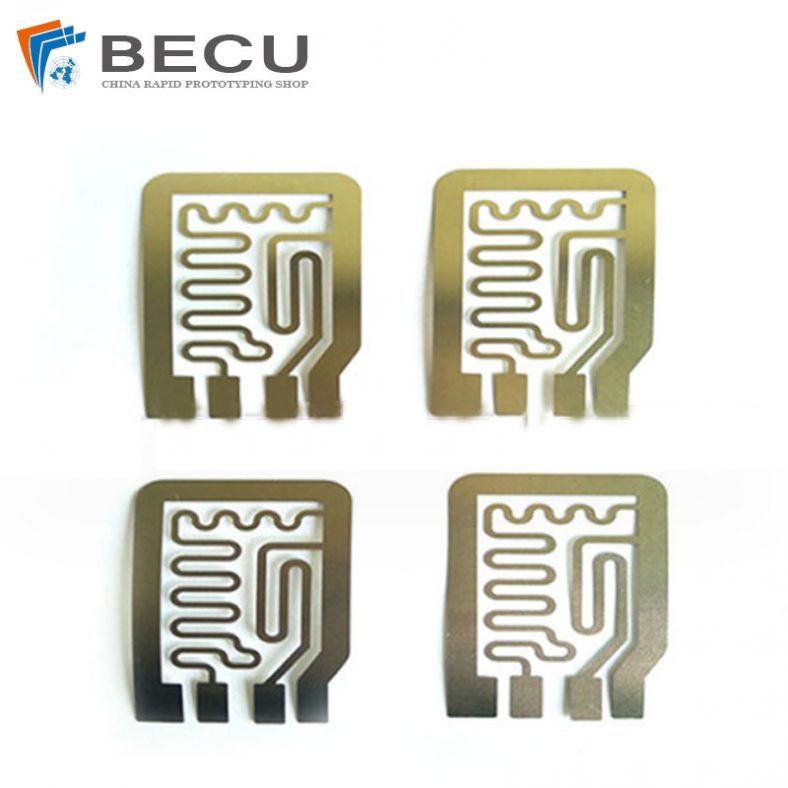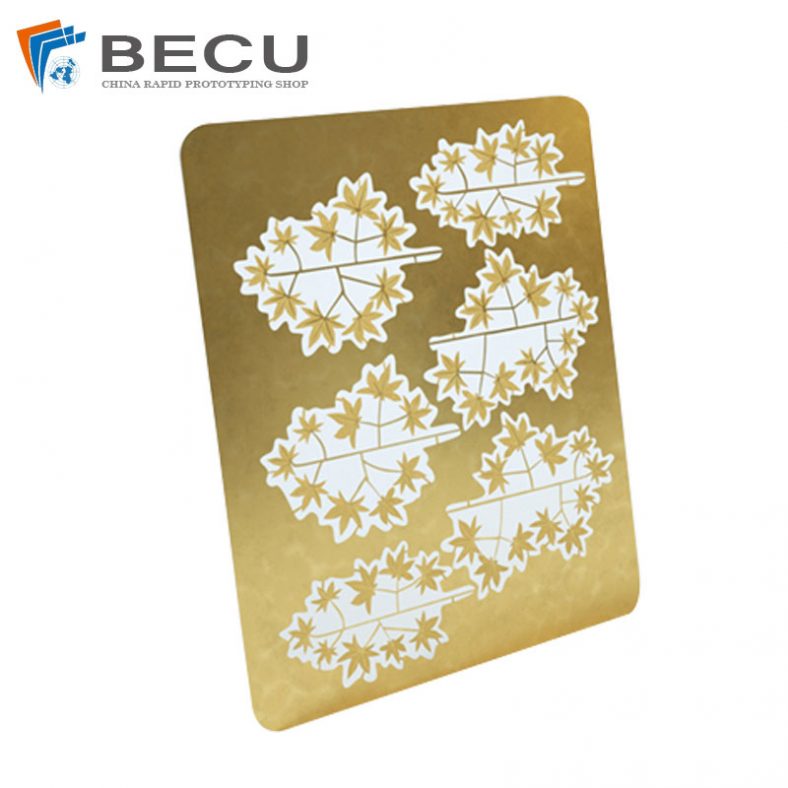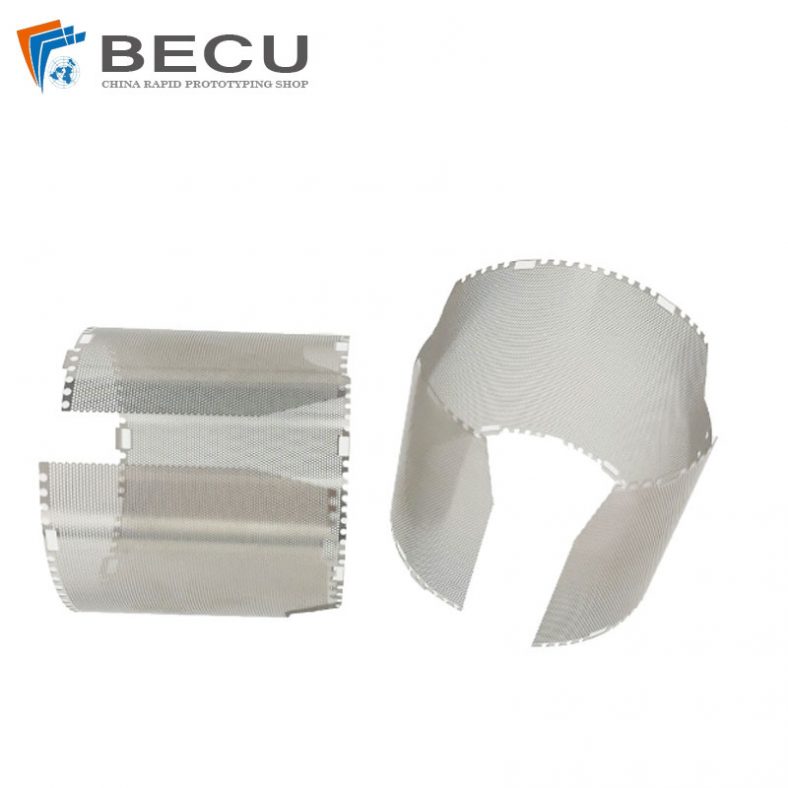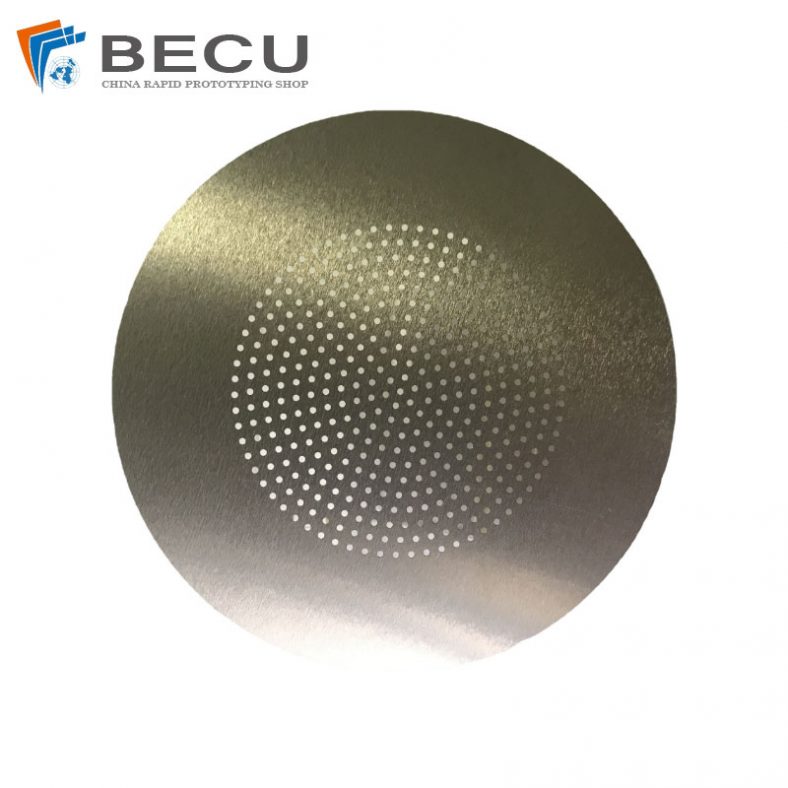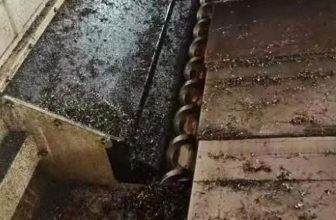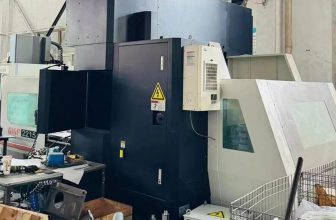Copperplate printing, an intaglio printmaking technique, has been a cornerstone of artistic and technical reproduction since its inception in the 15th century. Known for its ability to produce finely detailed and richly textured prints, copperplate printing relies on incising designs into a metal plate, typically copper, which is then inked and pressed onto paper. The process, historically rooted in manual engraving and etching, has evolved significantly with technological advancements. One of the most transformative developments in recent decades is the integration of photolithography with traditional etching techniques, a synergy that has revolutionized the precision, efficiency, and scalability of copperplate printing.
Photolithography, originally developed for semiconductor manufacturing, is a process that uses light to transfer patterns onto a substrate coated with a photosensitive material, known as photoresist. When adapted for copperplate printing, photolithography allows for the creation of highly precise and complex patterns that surpass the limitations of manual techniques. By combining photolithography with chemical etching, printmakers can achieve unprecedented control over line work, tonal variation, and plate durability, while also streamlining production workflows. This article explores the process improvements resulting from this integration, detailing the technical advancements, challenges, and implications for both artistic and industrial applications. It examines the historical context, modern methodologies, comparative analyses, and future prospects of this hybrid approach, providing a comprehensive overview for scholars, artists, and technologists.
Historical Context of Copperplate Printing
Origins and Evolution
Copperplate printing emerged in Europe during the late 15th century, with early practitioners like Daniel Hopfer of Augsburg credited for applying etching techniques to printmaking. The process involved incising designs into a copper plate using a burin (for engraving) or acid (for etching), which would hold ink in the recessed lines. These plates were then pressed against dampened paper under high pressure to transfer the inked design, producing a mirror image with characteristic plate marks. Early etchings, such as those by Albrecht Dürer and Parmigianino, showcased the medium’s potential for intricate line work and expressive qualities, distinguishing it from the coarser relief prints of woodcuts.
By the 17th century, etching had surpassed engraving as the preferred intaglio technique due to its relative ease for artists trained in drawing. Jacques Callot’s improvements to etching grounds, using harder varnishes, enhanced the durability and precision of plates. The 18th century saw further innovations, such as aquatint, which allowed for tonal effects resembling watercolor washes, as employed by artists like Francisco Goya. These developments laid the groundwork for copperplate printing’s versatility, making it a favored medium for both artistic expression and commercial reproduction, including maps, book illustrations, and currency.
Limitations of Traditional Methods
Despite its artistic merits, traditional copperplate printing faced several challenges. Manual engraving required exceptional skill and time, limiting output and increasing costs. Etching, while more accessible, was prone to inconsistencies due to variations in acid strength, exposure time, and ground application. The reliance on toxic chemicals, such as nitric acid, posed health and environmental risks. Additionally, copper plates wore down after repeated pressings, reducing the quality and quantity of prints in an edition. These limitations spurred interest in modernizing the process, particularly as industrial demands for precision and scalability grew in the 19th and 20th centuries.
The advent of photomechanical processes in the 19th century, such as photogravure, introduced photographic techniques to intaglio printing. Photogravure used light-sensitive gelatin to transfer images onto copper plates, which were then etched to create printable surfaces. While effective for reproducing photographs, photogravure was complex and costly, limiting its adoption in traditional printmaking. The development of photolithography in the semiconductor industry, however, offered a more versatile and precise method for pattern transfer, setting the stage for its integration into copperplate printing.
Fundamentals of Photolithography
Principles and Mechanisms
Photolithography, derived from the Greek words for “light,” “stone,” and “writing,” is a process that uses light to transfer a pattern onto a substrate coated with a photosensitive material, or photoresist. In its modern form, photolithography involves several key steps: substrate preparation, photoresist application, exposure, development, and pattern transfer. The substrate, typically a silicon wafer in semiconductor manufacturing or a copper plate in printmaking, is cleaned and coated with a thin layer of photoresist. A photomask, containing the desired pattern, is aligned over the substrate, and light (often ultraviolet or deep ultraviolet) is projected through the mask to expose the photoresist. The exposed areas undergo a chemical change, becoming either soluble or insoluble in a developer solution, depending on the type of photoresist (positive or negative). After development, the pattern is transferred to the substrate through etching or deposition processes.
In copperplate printing, photolithography replaces the manual application of etching grounds with a photosensitive resist. The copper plate is coated with a photoresist, exposed to light through a photomask containing the artwork, and developed to reveal the areas to be etched. The exposed copper is then etched using a chemical mordant, such as ferric chloride, to create the intaglio lines and textures. This method allows for patterns with resolutions down to micrometers, far surpassing the precision of hand-drawn grounds.
Types of Photoresists
Photoresists are classified as positive or negative based on their response to light exposure. Positive photoresists become soluble in the developer when exposed to light, allowing the exposed areas to be removed and the underlying substrate to be etched. Negative photoresists, conversely, become insoluble when exposed, protecting the exposed areas while the unexposed regions are developed away. For copperplate printing, positive photoresists are often preferred due to their ability to produce sharp, clean lines suitable for intaglio work. Common photoresists include diazonaphthoquinone (DNQ)-based resists for ultraviolet light and chemically amplified resists for deep ultraviolet (DUV) systems.
Light Sources and Optics
The choice of light source in photolithography significantly affects resolution and throughput. Traditional photolithography used mercury-vapor lamps emitting ultraviolet (UV) light at wavelengths of 365 nm (i-line). Modern systems employ excimer lasers, such as krypton fluoride (KrF) at 248 nm or argon fluoride (ArF) at 193 nm, to achieve finer resolutions. The resolution of a photolithographic system is governed by the equation:
[ R = k_1 \cdot \frac{\lambda}{NA} ]
where ( R ) is the minimum feature size, ( k_1 ) is a process-dependent factor, ( \lambda ) is the wavelength of light, and ( NA ) is the numerical aperture of the lens system. Shorter wavelengths and higher numerical apertures reduce the minimum feature size, enabling finer patterns. For copperplate printing, UV light is typically sufficient, as the required feature sizes (often in the tens of micrometers) are less stringent than in semiconductor manufacturing.
Fundamentals of Etching in Copperplate Printing
Traditional Etching Process
In traditional copperplate etching, a copper plate is coated with an acid-resistant ground, typically a mixture of beeswax, bitumen, and resin. The artist scratches through the ground with an etching needle to expose the copper, creating the design. The plate is then immersed in an acid bath, commonly nitric acid or Dutch mordant, which etches the exposed areas to form recessed lines. The depth and width of the lines depend on the acid strength, exposure time, and ground quality. After etching, the ground is removed, the plate is inked, and the surface is wiped clean, leaving ink only in the etched lines. The plate is pressed against dampened paper to transfer the ink, producing the print.
Modern Etching Techniques
Modern etching for copperplate printing has adopted less toxic and more controlled methods. Ferric chloride, a safer alternative to nitric acid, is widely used due to its consistent etching rate and reduced environmental impact. Vertical etching tanks, which allow bubbles to rise off the plate surface, improve uniformity and reduce studio space requirements. Additionally, green etching methods, such as those using soy sauce for degreasing or acrylic-based grounds, have emerged to minimize chemical hazards. These advancements align with the integration of photolithography, which requires precise and repeatable etching to preserve the fine patterns created by photoresists.
Aquatint and Tonal Effects
Aquatint, an intaglio technique developed in the 18th century, is often combined with etching to produce tonal effects. A copper plate is dusted with powdered rosin, which is fused to the surface with heat. The plate is then etched in stages, with areas progressively stopped out to create varying depths that hold different amounts of ink, resulting in a range of tones. In photolithographic copperplate printing, aquatint can be adapted by using photoresists to control the exposure of rosin-coated areas, allowing for precise tonal gradations.
Integration of Photolithography and Etching
Process Workflow
The integration of photolithography and etching in copperplate printing involves a hybrid workflow that combines the precision of photolithographic pattern transfer with the depth and texture of intaglio etching. The process can be broken down into the following steps:
- Plate Preparation: A copper plate is polished to a mirror finish, degreased with whiting powder or soy sauce, and coated with a thin layer of photoresist using spin coating or dip coating. The plate is pre-baked to remove solvents and enhance resist adhesion.
- Photomask Creation: A photomask, typically a transparent film or glass plate with an opaque pattern, is created using digital design software or photographic techniques. The mask contains the artwork in a mirror image to account for the reversal during printing.
- Exposure: The photoresist-coated plate is aligned with the photomask and exposed to UV light in a contact or projection exposure system. The light alters the chemical properties of the photoresist, defining the areas to be etched.
- Development: The plate is immersed in a developer solution, which removes the exposed (for positive resists) or unexposed (for negative resists) photoresist, revealing the copper surface in the desired pattern.
- Etching: The plate is etched using ferric chloride or another mordant. The photoresist protects the unexposed areas, while the exposed copper is etched to form intaglio lines and textures. The etching time and solution strength are carefully controlled to achieve the desired depth.
- Resist Removal: The remaining photoresist is stripped using a solvent, such as 1-Methyl-2-pyrrolidone (NMP), or plasma ashing, leaving a clean, etched copper plate.
- Inking and Printing: The plate is inked, wiped, and pressed against dampened paper using an etching press. The pressure transfers the ink from the etched lines to the paper, producing the final print.
- Optional Post-Processing: The print may be hand-colored with watercolors or combined with other techniques, such as aquatint, to enhance tonal effects.
Advantages of Integration
The combination of photolithography and etching offers several advantages over traditional copperplate printing:
- Precision: Photolithography enables feature sizes as small as a few micrometers, allowing for intricate details that are difficult to achieve manually. This is particularly valuable for reproducing complex artworks or technical diagrams.
- Consistency: The use of photomasks and automated exposure systems ensures uniformity across multiple plates and editions, reducing variability caused by human error.
- Scalability: Photolithographic processes can be batched, enabling the production of multiple plates simultaneously, which is ideal for large editions or commercial applications.
- Reduced Health Risks: By replacing toxic acids with safer etchants like ferric chloride and using controlled resist application, the process minimizes exposure to hazardous chemicals.
- Versatility: The ability to combine photolithography with techniques like aquatint or drypoint expands the artistic possibilities, allowing for both fine line work and rich tonal effects.
Challenges and Limitations
Despite its advantages, the integration of photolithography and etching presents several challenges:
- Equipment Costs: Photolithographic systems, including exposure units and cleanroom facilities, require significant investment, which may be prohibitive for individual artists or small studios.
- Technical Expertise: The process demands knowledge of both printmaking and photolithographic techniques, necessitating specialized training.
- Material Compatibility: Photoresists and etchants must be carefully selected to ensure compatibility with copper and to avoid defects, such as incomplete etching or resist adhesion issues.
- Environmental Concerns: While greener methods reduce toxicity, the disposal of chemical waste, including spent etchants and solvents, remains a concern.
- Artistic Constraints: The precision of photolithography may limit the spontaneous, hand-crafted quality valued in traditional etching, requiring artists to adapt their creative approaches.
Comparative Analysis
To illustrate the improvements brought by combining photolithography and etching, the following tables compare traditional copperplate etching, photogravure, and the hybrid photolithography-etching process across key parameters.
Table 1: Comparison of Process Characteristics
| Parameter | Traditional Etching | Photogravure | Photolithography-Etching |
|---|---|---|---|
| Pattern Creation | Manual scratching through wax ground | Photographic transfer via gelatin tissue | Light exposure through photomask |
| Resolution | Limited by artist skill (~100 μm) | Moderate (~50 μm) | High (~1-10 μm) |
| Consistency | Variable due to manual techniques | Moderate, depends on gelatin quality | High, automated exposure and development |
| Setup Time | High (hours for complex designs) | Moderate (preparation of gelatin tissue) | Low (digital mask creation, automated exposure) |
| Scalability | Low (manual process) | Moderate (batch processing possible) | High (batch processing, multiple plates) |
| Chemical Safety | Hazardous (nitric acid, volatile grounds) | Moderate (less toxic but still chemical-based) | Improved (ferric chloride, controlled resists) |
| Equipment Cost | Low (basic tools, acid baths) | High (photographic equipment, etching tanks) | Very High (exposure systems, cleanroom facilities) |
| Tonal Capability | Limited (requires aquatint for tones) | High (continuous tones via gelatin) | High (aquatint integration, precise resist control) |
Table 2: Comparison of Artistic Outcomes
| Parameter | Traditional Etching | Photogravure | Photolithography-Etching |
|---|---|---|---|
| Line Quality | Expressive, hand-crafted, slightly irregular | Smooth, photographic, less tactile | Crisp, precise, uniform |
| Tonal Range | Moderate (with aquatint) | Excellent (continuous tones) | Excellent (with aquatint or resist modulation) |
| Detail Reproduction | Moderate (depends on artist skill) | High (photographic fidelity) | Very High (micrometer-scale details) |
| Edition Size | Limited (~100-200 prints before plate wear) | Moderate (~500 prints with steel-facing) | High (~1000+ prints with durable resists) |
| Creative Flexibility | High (spontaneous, direct drawing) | Moderate (limited by photographic source) | Moderate (constrained by digital mask design) |
| Plate Longevity | Low (copper wears quickly) | Moderate (improved with steel-facing) | High (resists protect plate, repeatable etching) |
Table 3: Environmental and Safety Considerations
| Parameter | Traditional Etching | Photogravure | Photolithography-Etching |
|---|---|---|---|
| Primary Chemicals | Nitric acid, wax grounds, turpentine | Dichromates, acids, solvents | Ferric chloride, photoresists, NMP |
| Toxicity | High (volatile fumes, skin/eye irritants) | Moderate (dichromates are carcinogenic) | Lower (safer etchants, controlled application) |
| Waste Management | Challenging (acidic waste, solvent disposal) | Moderate (chemical waste requires treatment) | Moderate (requires solvent recycling, filtration) |
| Ventilation Needs | High (fume hoods mandatory) | High (for chemical processing) | Moderate (cleanroom standards reduce exposure) |
| Green Alternatives | Limited (some use of soy sauce, water-based inks) | Limited (some non-toxic gelatin processes) | High (acrylic grounds, soy-based degreasers) |
Case Studies and Recent Developments
Artistic Applications
The integration of photolithography and etching has been embraced by contemporary printmakers seeking to push the boundaries of intaglio. For example, the Zea Mays Printmaking studio in Massachusetts has pioneered green photolithographic techniques, using acrylic-based photoresists and ferric chloride to create etchings with minimal environmental impact. Their work demonstrates how photolithography can produce plates with intricate line work and tonal effects, as seen in artist Chrissy Wolpert’s two-color prints, which utilize multiple plates to achieve vibrant compositions.
Another notable case is the use of photolithography in reproducing historical artworks. Museums and print studios have employed the hybrid process to create high-fidelity replicas of old master prints, such as those by Rembrandt or Goya, preserving the original plates while producing editions with modern precision. The ability to digitally manipulate photomasks allows for corrections or enhancements to damaged plates, ensuring the longevity of cultural artifacts.
Industrial Applications
Beyond artistic printmaking, the hybrid process has found applications in industries requiring high-precision metal patterning, such as electronics and microfabrication. The roll-to-roll etching process developed by NISSHA, a Japanese company, uses photolithography to pattern copper thin films for sensors and flexible circuits. With line/space resolutions of 10/10 μm, this process demonstrates the scalability and precision of photolithographic etching, which can be adapted for large-format copperplate printing in commercial contexts.
In semiconductor manufacturing, the via-first dual damascene process employs photolithography and etching to create copper interconnects with low-k dielectrics. While not directly related to printmaking, the techniques developed for etching copper in these applications—such as the use of dextrin-based bottom antireflective coatings (BARCs)—have informed advancements in copperplate printing by improving etch rates and resist profiles.
Recent Innovations
Recent advancements in photolithography-etching integration include the development of maskless lithography systems, which project patterns directly onto the photoresist without a physical photomask. This technology, while primarily used in microfabrication, offers potential for printmaking by allowing real-time pattern adjustments, reducing costs, and enabling rapid prototyping. Additionally, the adoption of extreme ultraviolet (EUV) lithography, with wavelengths as low as 13.5 nm, promises even finer resolutions, though its high cost limits its current applicability to artistic printmaking.
Green chemistry has also influenced the field, with innovations like coffee lift—a non-toxic alternative to sugar lift—allowing artists to create textured effects without hazardous solvents. The use of biodegradable photoresists and water-based developers further reduces the environmental footprint of the process, aligning with the sustainability goals of modern printmaking studios.
Future Prospects
Technological Advancements
The future of photolithography-etching in copperplate printing lies in continued technological refinement. Advances in light sources, such as EUV and soft X-ray lithography, could push resolutions into the sub-micrometer range, enabling unprecedented detail in artistic prints. Similarly, improvements in photoresist materials, such as those with higher sensitivity or self-developing properties, could simplify the process and reduce chemical usage. The integration of artificial intelligence (AI) in mask design and process optimization may also enhance efficiency, allowing for automated correction of defects or real-time adjustment of etching parameters.
Artistic and Cultural Impacts
As photolithography becomes more accessible through shared facilities or lower-cost equipment, it has the potential to democratize high-precision printmaking. Artists from diverse backgrounds can experiment with the hybrid process, fostering new styles and collaborations. The ability to combine digital design with traditional intaglio techniques may also bridge the gap between analog and digital art, appealing to contemporary audiences while preserving the tactile qualities of copperplate prints.
Challenges to Overcome
To fully realize these prospects, several challenges must be addressed. The high cost of photolithographic equipment remains a barrier, necessitating partnerships between artists, studios, and research institutions. Environmental regulations will require ongoing innovation in waste management and green chemistry. Additionally, the art world must navigate the tension between technological precision and the hand-crafted ethos of traditional printmaking, ensuring that the hybrid process enhances rather than overshadows artistic expression.
Conclusion
The integration of photolithography and etching represents a significant advancement in copperplate printing, merging the precision of modern technology with the rich heritage of intaglio. By enabling finer resolutions, greater consistency, and safer workflows, this hybrid process has expanded the possibilities for both artistic and industrial applications. While challenges such as cost, expertise, and environmental impact persist, ongoing innovations in materials, equipment, and techniques promise to further enhance its accessibility and sustainability. As printmakers and technologists continue to explore this synergy, the future of copperplate printing looks poised to blend tradition with cutting-edge innovation, preserving its legacy while embracing new creative horizons.

